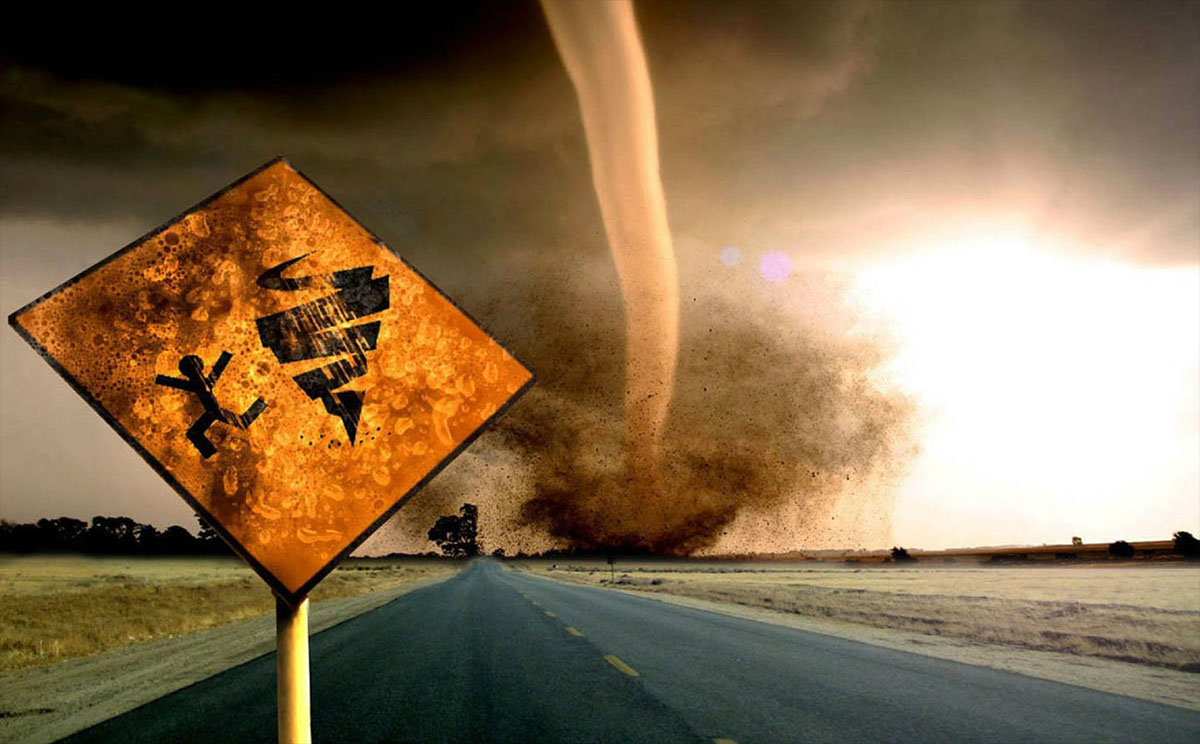does global warming make tornadoes more powerful?

Nowadays, when severe weather strikes, the news immediately starts asking if global warming was responsible for the event they just covered, which is generally the wrong question to ask in the first place. Global warming itself is not going to trigger a particular storm system, rather it’s going to meddle with their frequency and severity depending on your regional climate because the world is a very big and complicated place, and a worldwide temperature rise of one degree will affect different places on Earth is different ways.
This is what allows deniers to say that one glacier melting slower than another, or changing shape, means global warming isn’t happening because they should all melt, ignoring that their shape, location, and composition plays a huge role in how they will behave. So what should we expect to happen when we look at an event in one region of the world defined by a very particular kind of storm system: tornado outbreaks in the country where there are entire seasons during which they’re very likely to happen? There’s bound to be an uptick in how many tornadoes happen and how powerful they get, right?
Just like everything else in science, the answer isn’t quite cut and dry. While the typical number of outbreaks was roughly 20 per year over the last 60 years, the average number of tornadoes per outbreak rose by 50% as, interestingly enough, did the variance per outbreak. In short, we can’t find a change in the number of outbreaks and the ones that spawn fewer tornadoes grew less intense over more than half a century. However, the more intense ones have gotten really extreme, with far more tornadoes.
Rather than increasing in number in a straight line, there are now extreme swings in how many tornadoes are born from storm system to storm system. It’s an interesting result though not a completely bizarre one. After all, tornadoes require a precise sequence of events to happen and North America is one of the few places where warm, moist air from the sea and cold, dry air from the Arctic can collide across vast swaths of land forming the powerful supercells that can spawn them, so if global warming is having any effect on them whatsoever, making tornado outbreaks more inconsistent with more energy being dumped into the typical regional weather patterns over decades is definitely not out of the question.
Since the research is limited to NOAA reports for the United States, it’s prudent to ask about an uptick in tornadoes in Canada, which also has a Tornado Alley, because a border isn’t going to suddenly stop a storm system to fill out customs forms and turn it away for lacking government issued identification to enter another nation. But there’s a bit of a controversy regarding if that’s happening because while on paper there are more tornadoes, scientists are hedging their bets by noting that they’re often happening in less populated regions and finally being spotted more often and detected more accurately so they’re not sure what the baseline was over the years. If those areas were much more heavily populated and more active, like they are in the U.S., they would have better tracking and would’ve been able to provide a more definitive answer.
And all this brings us back to our original question of whether global warming is fueling tornadoes. The answer seems to be that it’s too early to tell, but over the last 60 years, the more violent swings in tornado outbreaks seem to point to it as a very plausible culprit. As always, the more data we have, the more complete our picture, but first impressions are that when weather turns violent, excess heat in our atmosphere can make an already bad storm even more extreme…





